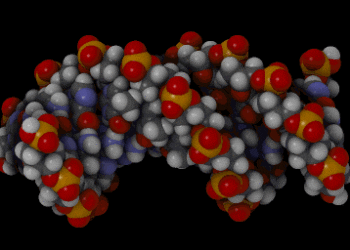Individualized pelvic floor muscle training improves prolapse symptoms
Image: PD
1. Women who underwent one-on-one pelvic floor muscle training reported fewer prolapse symptoms at 12 months.
2. Women who received pelvic floor training were half as likely to seek further treatment at 12 months compared with controls.
Evidence Rating Level: 1 (Excellent)
Study Rundown: This study found that women who underwent individualized pelvic floor muscle training not only had fewer prolapse symptoms, but were also less likely to seek further treatment at 12 months compared with women who did not receive the training. Strengths of this study include its large, multi-centered randomized design, as well as the feasibility of the five-appointment training intervention. Results are limited by the low 12-month follow-up rate, which introduces the potential for selective attrition and left the study underpowered to find significance in prolapse stage. Furthermore, the 12-month study period couldn’t assess long-term efficacy of the trainings, which are prone to decreased participant compliance over time. Future studies might assess longer-term outcomes or try electronic follow-up surveys to increase response rates.
Click to read the study in The Lancet
Click to read an accompanying editorial in The Lancet
Relevant Reading: Conservative prevention and management of pelvic organ prolapse in women
In-Depth [multi-center randomized controlled trial]: Women from 25 centers around the world with newly diagnosed, symptomatic pelvic organ prolapse were assigned to receive one-on-one pelvic floor muscle training (n=225) or a prolapse lifestyle pamphlet and no training (control, n=222). The primary outcome was patient-reported prolapse symptoms (as assessed by the pelvic organ prolapse symptoms score—POP-SS) on 6 month (84% follow-up) and 12 month (66% follow-up) follow-up questionnaires. Secondary outcomes included women’s perceived change in prolapse and need for further prolapse treatment.
Women in the intervention group reported fewer prolapse symptoms than controls at both 6 months (between-group difference in change of POP-SS from baseline 2.84, 95% CI 2.05-3.63) and 12 months (1.52, 0.42-2.59). Women in the intervention group were less likely to receive any further treatment at 12 months (24% vs. 50%, p<0.0001), and were more likely to report their prolapse “better” at both 6 and 12 months.
By Maren Shapiro and Leah Hawkins, MD, MPH
More from this author: IUD contraception equally safe in teenagers as in older women, Black men less likely to receive follow-up for elevated prostate cancer marker, PSA, Intake of fish fatty acids associated with lower risk of breast cancer, USPSTF recommends chemoprevention for women at high risk for breast cancer, Insurance status affects treatment of early stage breast cancer, SERMs decrease breast cancer risk even after treatment
©2012-2013 2minutemedicine.com. All rights reserved. No works may be reproduced without expressed written consent from 2minutemedicine.com. Disclaimer: We present factual information directly from peer reviewed medical journals. No post should be construed as medical advice and is not intended as such by the authors, editors, staff or by 2minutemedicine.com. PLEASE SEE A HEALTHCARE PROVIDER IN YOUR AREA IF YOU SEEK MEDICAL ADVICE OF ANY SORT.





